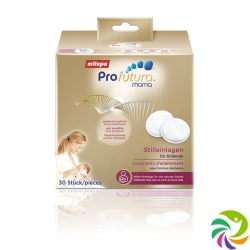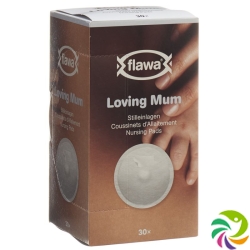Nursing Pads: Protecting Your Clothing and Comfort

Nursing pads play a crucial role in protecting clothing and increasing consolation for nursing mothers. Designed to soak up leakage of breast milk, these pads are indispensable for preserving hygiene and stopping embarrassing stains. Not only do they hold garments dry and clean, however additionally they provide a further degree of comfort, assisting to lessen skin irritation and enhance the overall breastfeeding experience. Offering effective leakage safety, nursing pads for breastfeeding help mothers experience confidence and cushty whether they may be at home or out and about.
Types of Nursing Pads
There are numerous styles of nursing pads, each designed to fulfill the different needs of nursing mothers. These encompass disposable pads, reusable pads, and silicone pads.
Disposable pads
Disposable pads for feeding are handy and hygienic. They are usually made of super absorbent materials and have an adhesive strip that keeps them in place in the bra. They can be easily thrown away after use, making them perfect for busy mothers who select a hassle-free option. These pads are individually wrapped to keep them clean and ready to use when needed.
Reusable pads
Reusable pads for breastfeeding are an environmentally friendly and price-effective alternative to disposable pads. Made from tender absorbent fabric along with cotton, bamboo or microfiber, these pads are washable and reusable. They are mild at the skin and come in different shapes and sizes to match different preferences. Reusable pads often have multiple layers to offer advanced superior absorbency and are a superb choice for mothers looking to lessen waste.
Such pads include ultra-absorbent Milupa Profutura Mama Nursing Pads, that have an anatomical shape, which means that they fit perfectly to the chest and are invisible underneath a bra. To guarantee ideal hygiene, each nursing pad is individually wrapped and the pads are fabricated from cotton, cellulose fiber and polyethylene.
Also, take note of the FLAWA Loving Mum Classic nursing pads, which provide a sense of protection and care day and night. With breathable care products, underwear is optimally covered in opposition to involuntary leakage of milk. Liquid is fed through the soft, skin-friendly fleece side into the enormously absorbent cellulose middle, wherein it's far securely saved. Adhesive dots on the side of the underwear ensure that the silky-soft nursing aid stays securely attached and you can move freely.
Silicone pads
Silicone pads for breastfeeding are unique in their design and functionality. Unlike absorbent pads, silicone pads save you leakage by gently pressing on the breast to prevent the waft of milk. They are usually worn without a bra and are specially useful throughout swimming or exercise where absorbent pads might not be sensible. Silicone pads are cleanable and reusable, making them a long-lasting solution for mothers looking for an alternative to traditional pads.
Benefits of Using Breastfeeding Pads
Protecting Clothing
One of the main advantages of nursing pads is their ability to take in milk leakage, stopping it from seeping into garb. This is specially essential for nursing mothers who may experience sudden unexpected voids or overflows.
Nursing pads are designed to keep garments dry with the aid of absorbing extra milk. This no longer only preserves the advent of the clothes, however also contributes to the overall comfort of the mother. Wet spots on garments can be uncomfortable and irritating, but with pads, mothers can stay dry and snug throughout the day. This dryness helps maintain hygiene and prevents the unpleasant sensation of dampness.
Enhancing Comfort
One of the main benefits of the usage of nursing pads is their capability to keep the skin dry. By soaking up any leakage of breast milk, those pads save you milk from selecting the skin and causing discomfort. Dry skin is less vulnerable to inflammation, chafing and rashes, which makes breastfeeding more pleasant. Using disposable, reusable or silicone pads, mothers can revel in feeling dry and fresh throughout the day.
Also, breastfeeding can from time to time cause sore or sensitive nipples, and consistent exposure to moisture increases this soreness. Nipple shield breastfeeding creates a barrier that facilitates reduced friction between skin and apparel, minimizing irritation. Soft absorbent substances used in pads, which include cotton or bamboo, are mild at the skin and offer an additional layer of safety. This can be mainly useful in the first weeks of breastfeeding, when the skin is being used to the brand new regime.
How to Use Breastfeeding Pads
Correct use of pads for breastfeeding provides maximum protection of garb and will increase consolation. Here is a step-through-step guide to proper placement and use:
- Step 1: Choose the type of nursing pad that pleasant suits your wishes—disposable, reusable, or silicone. Consider factors such as absorbency, consolation and convenience whilst choosing.
- Step 2: Before putting on the pad, make certain your breasts are clean and dry. This facilitates preventing infection and preserving hygiene. If vital, follow a cream or ointment to the nipples to soothe any discomfort earlier than applying the pad.
- Step 3: Remove the pad from the bundle and peel off any adhesive backing to reveal the sticky side. Make sure the pad is clean and dry. Place the pad over the teat, making sure it creates a secure seal to save you leakage. Adjust the pad so that it absolutely covers your nipple. The sticky side (if any) must adhere to the internal of the bra, helping to hold the pad in place.
- Step 4: Make sure the pad fits comfortably and would not cause inflammation. Adjust bra or top so the pad stays in region and provides the coverage and absorption you need.
- Step 5: Check the pad regularly and alternate it as needed to preserve it dry and cushty. Disposable pads should be discarded after use, while reusable pads need to be washed and dried according to the producer's instructions earlier than reuse.
Disclaimer: The article contains information about the importance of using breast pads and does not constitute medical recommendation. Always consult your doctor or lactation consultant with any questions on breastfeeding and the use of nursing pads.


